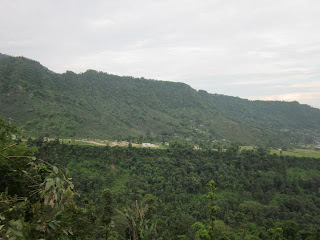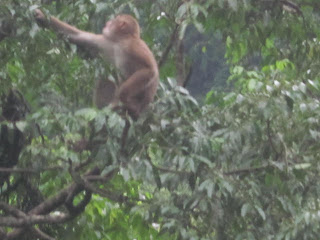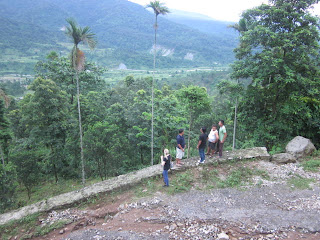As tourism brings forth new avenues, new experiences and so
many descriptions of magnificent locations, The Gorubathan Tourism Development Society
(GTDS) a mixture of young and matured village people mustered an idea to execute Eco-Tourism
(village tourism) in Gorubathan itself. The Eco-tourism basically tends to
bring about changes and exposure to marginalized areas and also create opportunities
to break free from unemployment. The idea of Eco-tourism also preserves
the natural resources. The communities and its inhabitants would be benefited
with variety of introduction of concepts like Home Stay, Riverside Camping, Trekking,
Hiking, etc.
Tourist from England
It is realized that Gorubathan has immense potential to
attract travelers from all over the
world .Gorubathan is blissfully blessed with natural beauty which is scenically
embellished with religious and traditional aspects along with historical
background as well. So far the beauty of
Gorubathan has been enjoyed by locals and nearby tourists but now since it has
so much to offer to quench the dire natural thirst of the people the society
decided to come up with several innovative ideas to make this place known in the field of worldwide tourism. The tourists might have seen exotic species,
incredible landscapes and etc and etc.,but they are yet to see Gorubathan.
The panoramic view, the fresh soothing flow of breeze, the balming
evening, rejuvenating nights in peaceful atmosphere, extended structure of
land, the organic farm, large golden crop field, long and virgin falls, charismatic
wildlife,flamboyant culture of Gorubathan would certainly tranquilize the
visitors from hurly burly life style. The conceptualization of modernization
and globalization impacting the whole world. These two rapid moving trend are
influencing people so much with its titivating ideas, peculiarities and
qualities it is evident and rampant that Eco-tourism has also
been emerging as immutable dimension thrashed by these two gigantic ,surpassing
concepts.But in case of Gorubathan it
is seemingly visible that there is no impact of these two giants. It has its
natural beauty. Man made resources are rare. All the spots, place of interests,
everything that exits here are purely natural.
This
vital natural gift of Gorubathan speaks for its beauty and naturally attracts
people to come and experience its serenity. But since Gorubathan has been demarcated in
Tourism World despite of having all the decisive essence of being tourist place
the GTDS has taken the responsibility to highlight the incredibility of tourism
in Gorubathan to the world. The Society emphasizes the innovation in tourism to
attract people from worldwide to make them taste the utmost delicacy and beauty
which are prevalent all over Gorubathan. The objective of the society is to
promote tourism in Gorubathan and to its surrounding places. Since the Gorubathan has been sidelined over
the years in tourism due to not promoting its worth to the world the committee
utterly seek to introduce different innovations and creativity to make this
place an ecstatic hub for travelers to feel like being at home by using its
resources and beauty. The hospitable attitude of the locals, amicable approach,
tenderness in behavior, moreover the natural beauty all these factors have been
a major advantage for Gorubathan to stand all the challenges that might come
along the way. To sum it up, one should in his/her lifetime visit Gorubathan
because it is a worth exploring destination for travelers.
.jpg)





























.jpg)
.jpg)





















